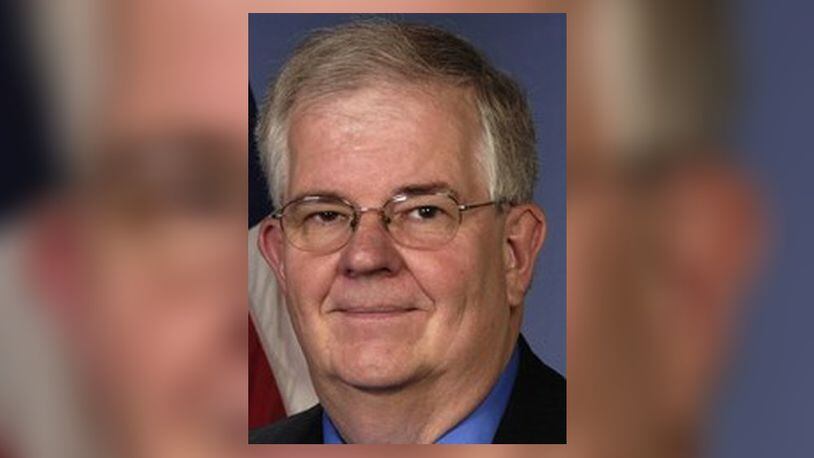He came “face to face, literally nose to nose” with Milosevic and his entourage as they toured the hotel, just as Fry did to make sure everything was set for 500 journalists covering the historic peace talks in November 1995. Fry was ushered aside by State Department officials who said, “Step, back, step back. This is the president of Serbia.”
The talks brokered a peace deal in the war-torn Balkans region of Eastern Europe, but years later Milosevic, who would become president of Yugoslavia, faced a war crimes tribunal. He died in a United Nations detention center at The Hague in 2006 before the trial concluded.
RELATED: Clinton: Dayton talks brought peace, but more work ahead
Fry, a former newspaper reporter at small dailies in Illinois, started at Wright-Patterson in 1987 and stayed at the Miami Valley base his three-decade long career, with numerous treks to the Pentagon and an Air Force base in Texas in between. He and his wife, Vicki, will remain in Beavercreek.
He led AFMC’s public affairs office for a decade, longer than any other civilian director in the high-level post.
The peace talks brought international attention to Wright-Patterson, Fry recalled Tuesday.
“CNN actually did a live broadcast of the (agreement) signing,” he said. “Literally, the whole world was watching Wright-Patterson and Dayton, Ohio at the time because that was a pretty significant event given the strife that had taken place in the Balkans.”
» WHAT TO KNOW: Peace agreement forged in Dayton: 3 things to remember
Presidential and vice presidential visits were among the most memorable at the base. In 2003, President George W. Bush flew to the National Museum of the U.S. Air Force on the Fourth of July to mark the centennial of the Wright brothers first flight and the nation’s birthday.
“Air Force One kind of did a flyby with him in it over the grounds while everybody was there,” Fry said.
In a presidential retirement letter, Fry received accolades from former President Jimmy Carter, the first White House candidate the Southern Illinois University student voted for when he was eligible at age 20 to cast a ballot in the 1976 election.
The job has held moments of crisis. On the morning of the Sept. 11, 2001 terrorist attacks, Fry was inside “the situation room” at AFMC headquarters meeting with then AFMC commander Gen. Lester Lyles.
Fry saw what looked like smoke coming out of a building on a nearby television “but I couldn’t make it out,” he said. “I didn’t think much about it.”
An officer would tell the general of the hijacked jetliners flown into the World Trade Center in New York City. The Pentagon outside Washington, D.C., was struck that day, too.
“We all went back to our offices and that was a pretty tense day because there was a lot going on,” Fry said. “It was pretty chaotic, pretty hectic, but we made it through.”
RELATED: Tattoo canceled due to storm
In another tense situation, Fry was in the middle of a chaotic storm on the grounds of the Air Force museum when sudden and violent winds descended just before Freedom’s Call Tattoo was due to bring tens of thousands through the museum gates in June 2012. Sixteen people were injured.
He and a few co-workers “hunkered down in a medical tent and that was pretty wild with trash cans and tents blowing around,” he said. “It seemed like the wind blew forever. We all got around the inside of the tent and held down the canvas. We were fearful the whole tent was going to go up, but fortunately we were OK.”
About the Author
